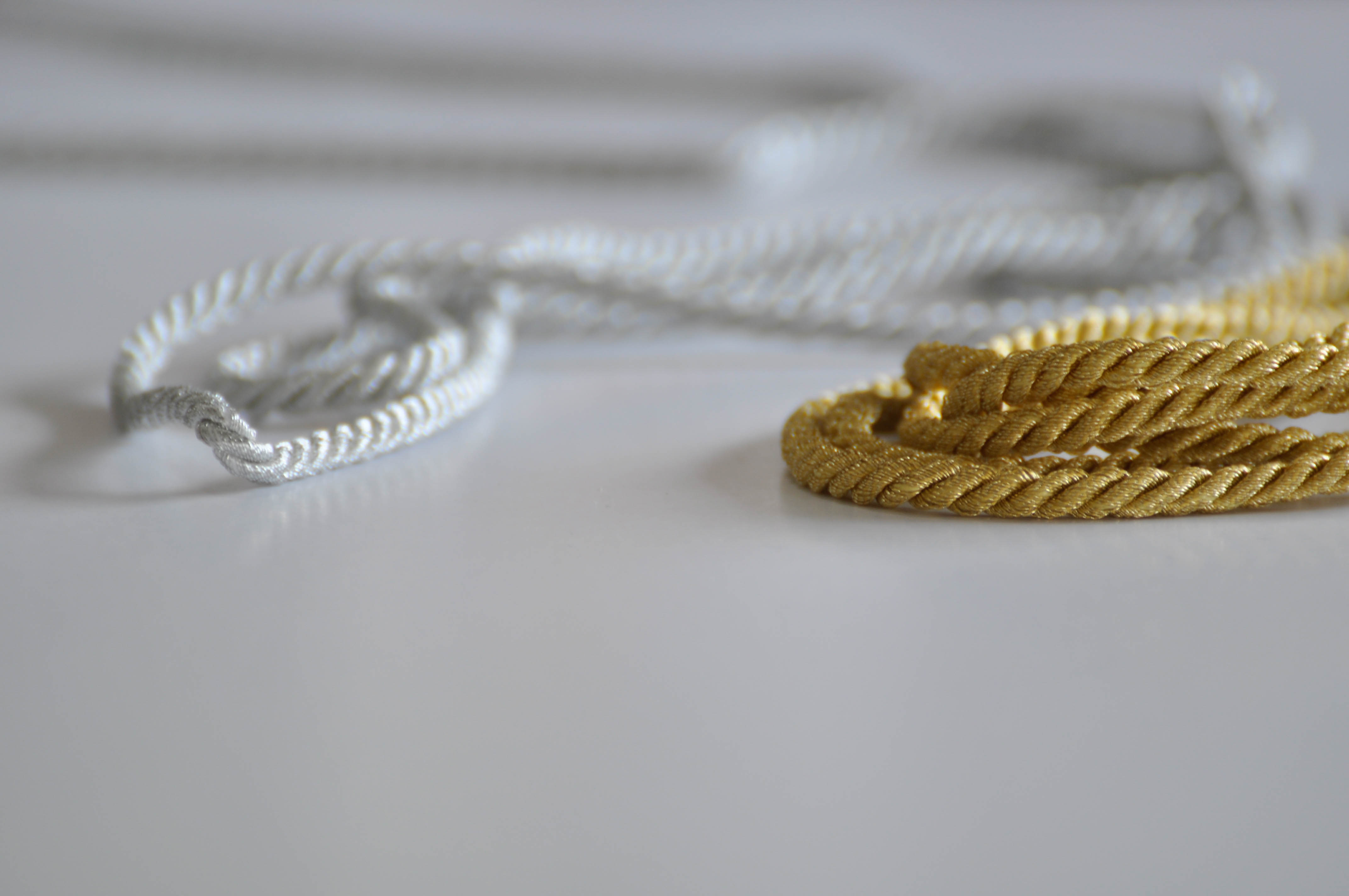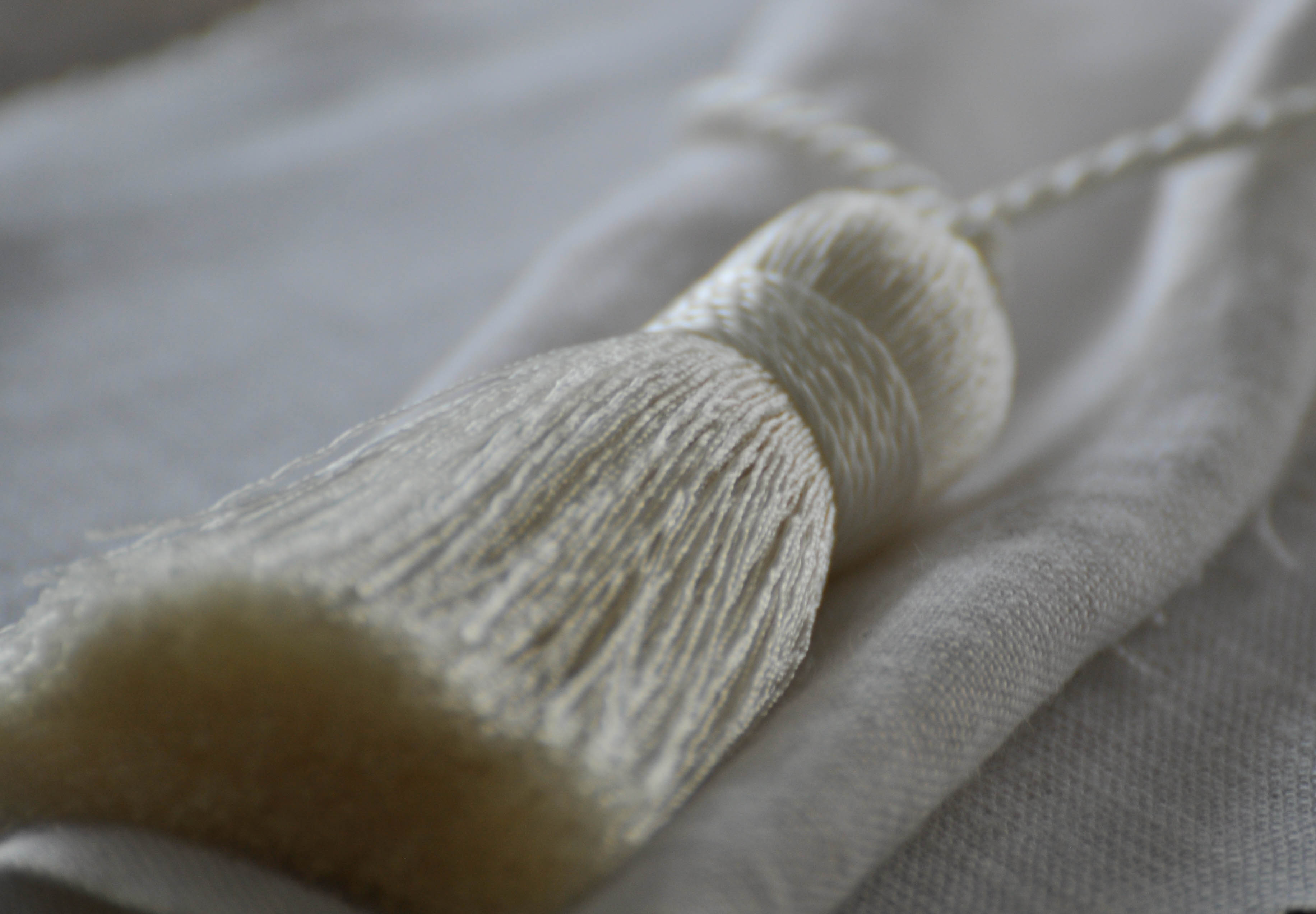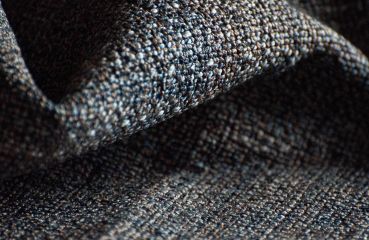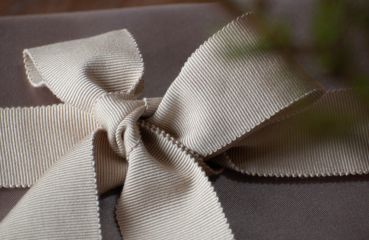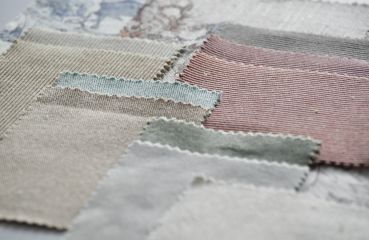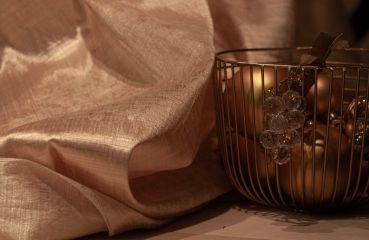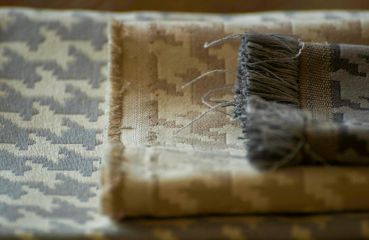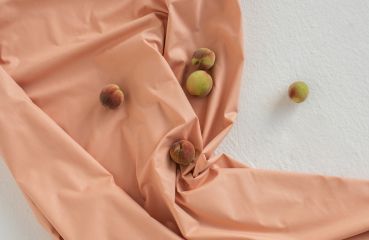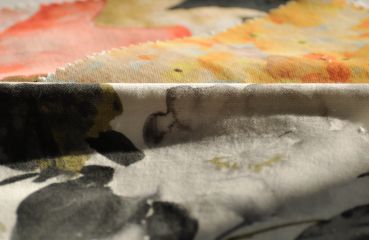ABOUT TRIMMINGS
Jewellery for the interior.
It is a textile equivalent of dotting the i's and crossing the t's, it is the proverbial icing on the cake. A stylistic complement, a statement of what the fabric itself sometimes does not sufficiently express, when we want to get a decorative, sometimes even a somewhat historicising effect in the interior design.
Irreplaceable wherever textile styling needs it.
It adds beauty and boldness to textile products. Sewn into the edges or corners of cushions or table linen, it defines their shapes and lines. Added to curtains and drapes, it emphasizes the beauty of fabrics, enhances the gloss of textures or even helps to tame their abundance. When used in furniture upholstery, it conceals and eliminates technical or material imperfections, adds finish and emphasises the line and form. It is jewellery for the interior. However, must be chosen with the knowledge of form, place, and application, and used in moderation. Just like with jewellery we wear, it does not like exaggeration and requires a sense of taste.
Trimmings. Where did it come from?
The word meaning “trimmings” in Polish (i.e. “pasmanteria”) comes from the French word “passement”, which means tape, trimming. When it comes to the textile industry, this term denotes textile products of varying, rather small widths, which are flat or linear (with a circular cross-section), made from various raw materials and using various techniques (weaving, knitting, braiding, twisting, cutting, or gluing), often combined in one product.
In its original form, it has been known since the ancient times, used in tailoring for hundreds of years, and since the 17th century, it has also been used in furniture upholstery.
In the early Middle Ages, trimmings were used to trim liturgical garments and formal secular clothes. Over time, they became a popular element of secular, clerical and military attire, including richly decorated livery. At first, they were woven using the tablet weaving technique, then on special looms or by means of other techniques, such as lacemaking.
The name "trimmings" derives from the craftsmen, haberdashers, who produced these goods.
In the past, silk and metal threads, sometimes wool, linen and cotton, were used as the materials for trimmings decorations. Today, they are successfully made from natural fibres as well as modern polyester substitutes for expensive silk. Metallic threads and all kinds of decorations are also used: jets, beads, crystals, stones etc.
Soutache, trims, galloons, tassels – strange sounding, but well known
Broadly speaking, trimmings comprises tapes, ribbons, laces, soutache, trims, galloons, tassels, decorative cords, pompoms, pendants, braided buttons and other types of buttons, loops and braids used as fasteners. Functionally, trimmings has always been used to strengthen and protect the edges of clothing, upholstery, and all textile interior decorations – curtains, tablecloths, table runners, cushions, bolster pillows, etc. It has a much greater significance and application from the decorative point of view.
Take a closer look at individual types of trimmings to understand their specifics.
Soutache is nothing else than a decorative cord, braided with intersecting threads. It can be sewn onto the surface of the fabric or sewn into the seam with the help of protruding selvedge. Depending on the cross-section of the cord, we get a very delicate or stronger and more noticeable effect.
Galloon, which is a woven or braided trim made entirely from or with addition of metal threads, has been used from the 16th century to decorate formal court clothing and livery. It has always denoted prestige, noble origin, or considerable wealth. Over time, it began to be used to determine distinction on military uniforms, especially on epaulettes and hats. In simple terms, the galloon is often synonymous with epaulettes or shoulder tabs. But this is a misconception, because the galloon is also a decorative trim for finishing upholstery, which nowadays is most often made from a blend of cotton and polyester threads. It can be modest or very eye-catching with a fringe, pompoms or tassels.
It is often decorated with embroidery of various forms and shapes, or a mélange of synchronized colours. Galloon trim is a decoration in itself, and its use in contemporary interior decorations knows no bounds.
Krayka deriving from traditional folk products, as well as trim, which is nothing more than a decorative ribbon, are other varieties of decorative trimmings tapes.
Krayka is a narrow, colourful, woven sash which is less than twenty centimetres wide and is often decorated with embroidery. Krayka was commonly used by the Slavs to strengthen and decorate the edges of folk costumes, protecting them from wearing through. Currently produced by craft workshops, it is still popular and used for decorative finish, mainly in home textiles.
Tassel is a decorative ending of a braided cord of a varying cross-section and length. In the basic version, it consists of a rope or knot clamp and fringe, in a more elaborate one - made of silk thread - the knot, weave and braid are based on a wooden mould. It is basically used to tie and support curtains and drapes. It can also be an ornament, a clothing or headgear accessory, in the form of a bunch of threads, feathers or bristles. Historically, decorative tassels were used in social class distinction or officer and military ranks, in liturgical and sacral vestments, e.g. monks' cinctures, as well as in horse riding and cavalry accessories. Since the 16th century, they have begun to be widely used for finishing sophisticated interiors, on bedspreads, cushions, curtains, lamps, and canopies. Small tassels are a common and liked decoration used with keys and on furniture handles, and even buttons.
Originally, tassels were knots tied on a rope. Later on, braided tassels were based on complex knots, including the 17th century sophisticated Milan knots with a herringbone stitch (or zigzag). The introduction of embroidery, i.e. weaves, knots and stitches behind or in the front of the needle was a novelty at the turn of the 18th and 19th centuries. Along with the development of industry, chenille, colourful metal tapes, glass, and pearl beads, etc. started to be used. In the 20th century, together with the development of industry and the advent of modernity, decorative tassels were simplified almost to their original version.
Sometimes fringes and pompoms are also called tassels. Fringes, which are regular, dense, overlapping rows of colourful threads or strings evenly trimmed and often tied with a knot, are sewn into the seams of pillows, table runners or bottoms or sides of decorative, lined drapes just like tassels.
Round pompoms or pompom tassels can be used in a similar way. Most often they adorn decorative tapes used in home textiles or furniture.
Regardless of the etymology or naming intricacies, today the unlimited wealth of trimmings accessories allows us to create textile interior decorations without any limitations. Depending on the type of materials and style, trimmings adds majesty, splendour and festivity to the fabrics or, on the contrary, with natural fibres and minimalist form, it reflects seriousness and nobility. The final effect always depends on our choices and design decisions.
Trimmings used in the session:
In this article, we have used selected elements from several trimmings product lines offered by DEKOMA.
They all create collections of a very diverse character: from matte FURNITURE TRIMMINGS products, the slight viscose shine of the ELEGANCE COLLECTION, through the silver and gold METAL COLLECTION, lace of the VICTORIAN COLLECTION to the mélange BAROQUE COLLECTION.
Text, creative idea, photos and styling: MBBM Studio.






